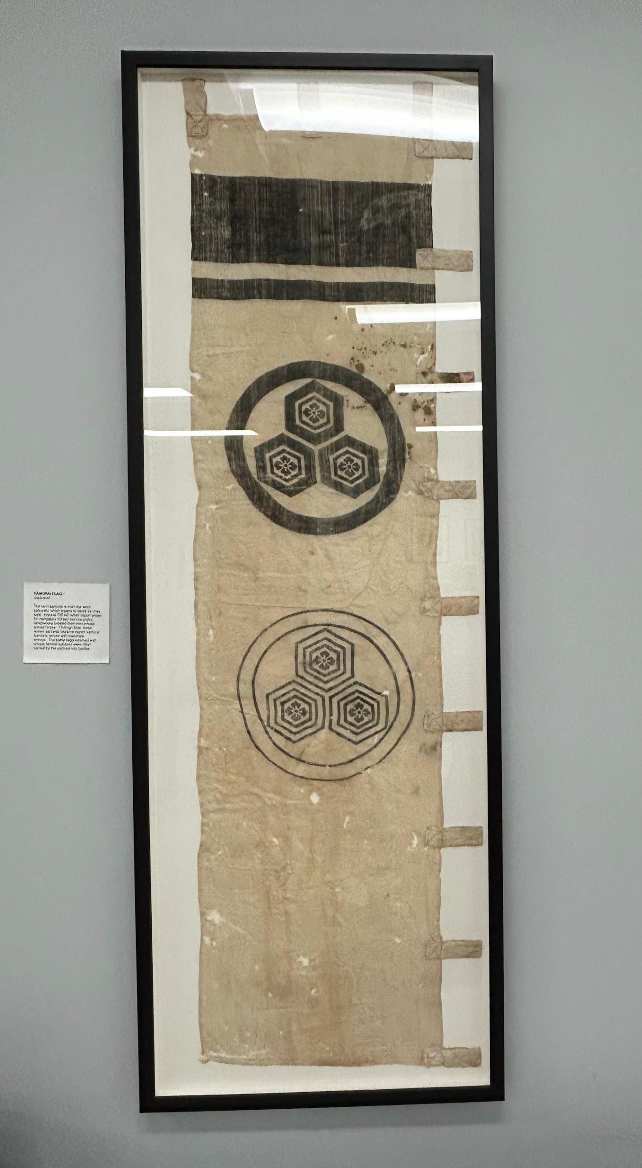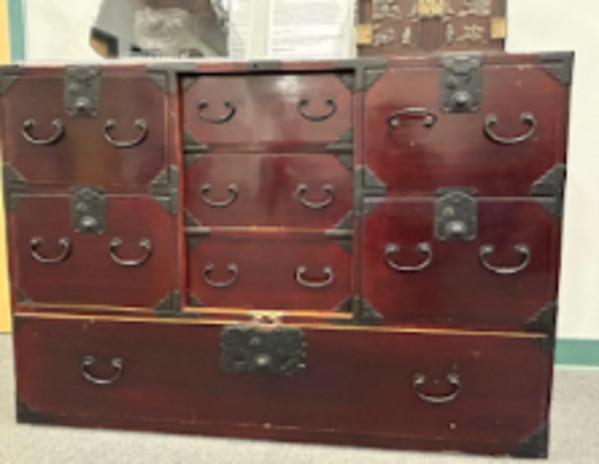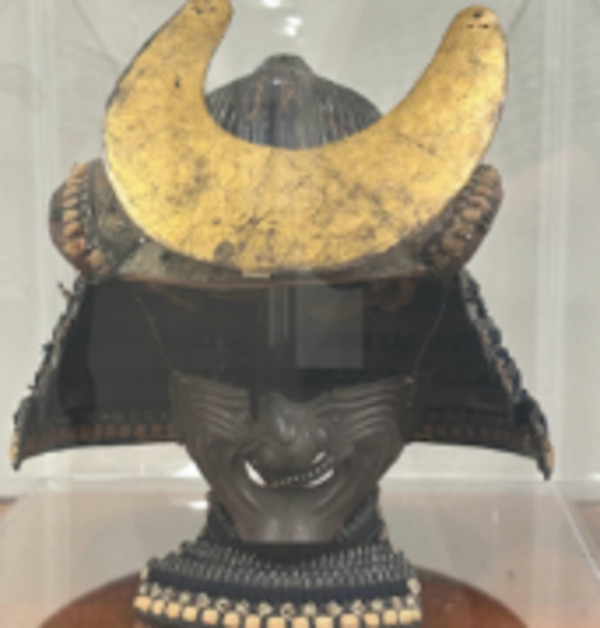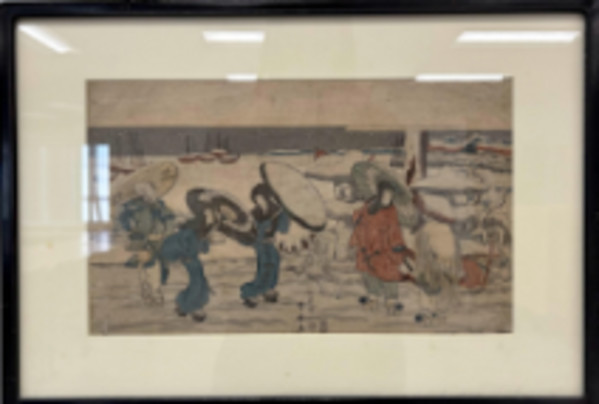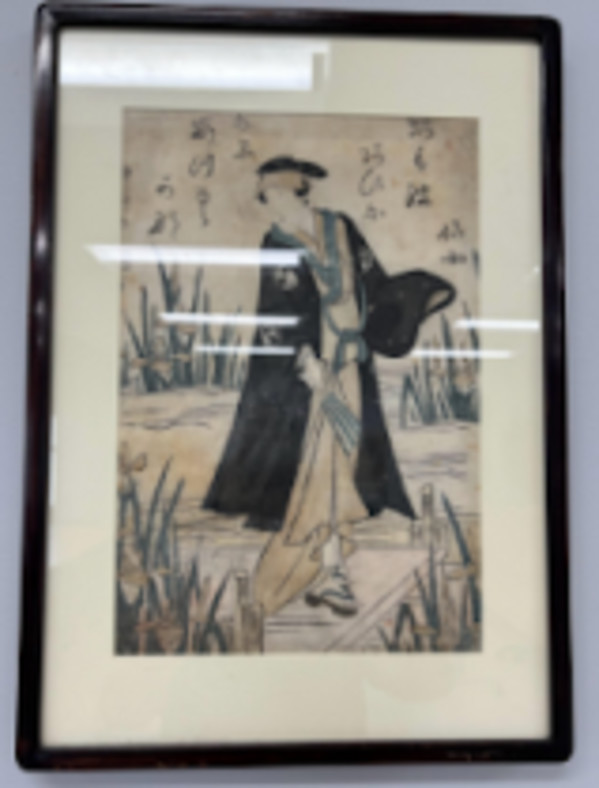The term samurai is from the word saburafu, which means to serve by one's side. Around 750 AD when Japan ended its mandatory military service policy, landowners created their own private armed forces. Through time, these servants became expert samurai warriors, armed with elaborate, customized armors. Samurai armors such as this one consists of a helmet (kabuto), mask (menpo), chest armor (do), shoulder guards, sleeves, skirt, and thigh and shin guards. A complete samurai armor may weigh between 20 to 45 pounds. A variety of materials were used to produce armor including iron, leather, brocade, and precious-semi precious metals. To exhibit the samurai's prowess, a team of artisans required several months to complete one armor that was both functional and aesthetically detailed. Even after 1615 when samurai battles were no longer fought, samurai families continued to commission elaborate samurai armors for ceremonial purposes. The armors embodied the warrior family's heritage by including family crests and other relevant symbols. The battle flags adorned with unique familial symbols were often carried by the samurai into battles.

